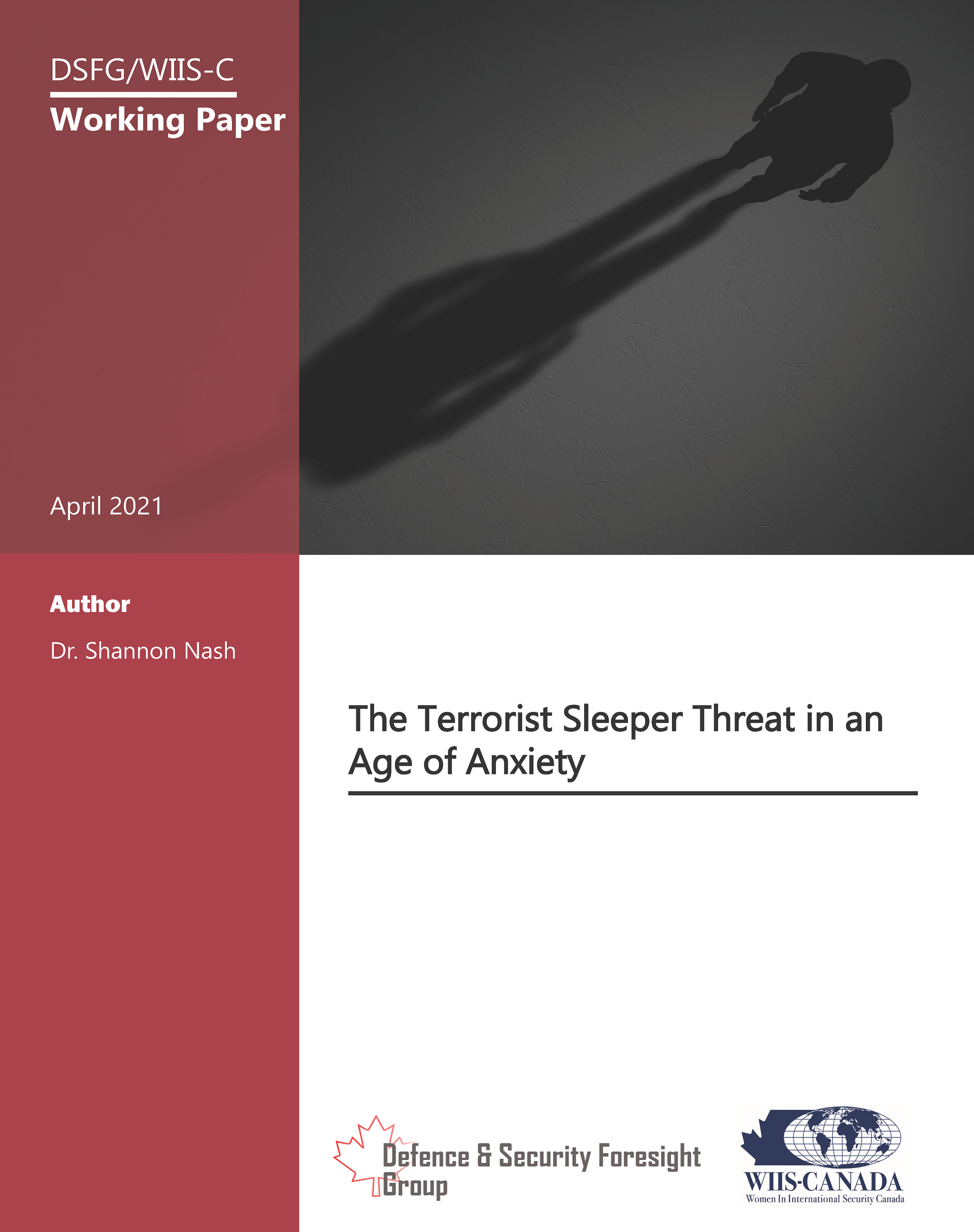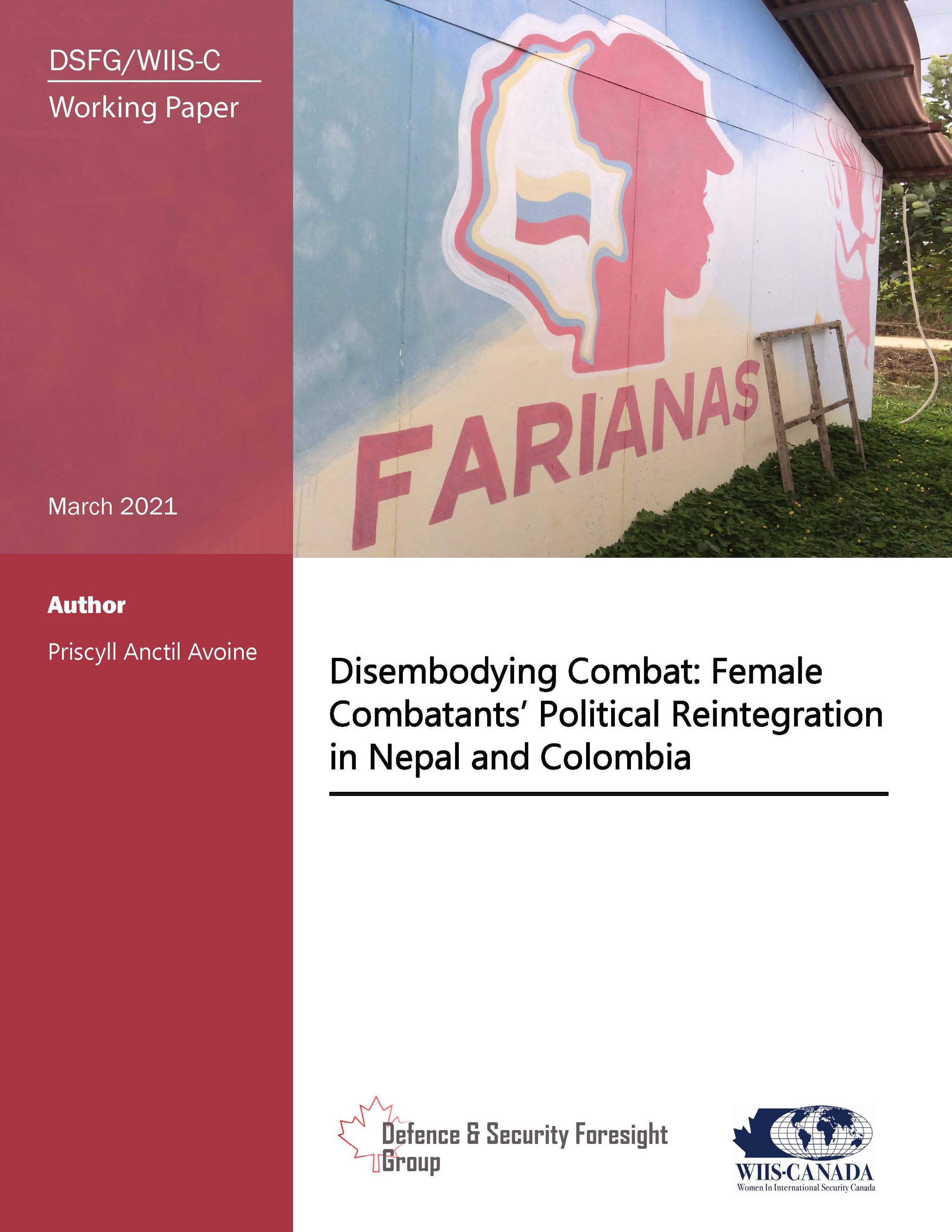In collaboration with the Canadian chapter of Women in International Security (WIIS-C), we have released a series of research papers written by their Emerging Thought Leaders (ELTs). These authors cover a range of topics, including climate change, digital security, gender and security, law and security, national security, and conflict and wars.
You can find their bios and more on their research on the WIIS-C website.
Their publications have been organized thematically:
National Security

The Terrorist Sleeper Threat in an Age of Anxiety (PDF)
Shannon Nash
The concept of a sleeper plays on societys inherent fears of an enemy within and exposes vulnerabilities within a society, especially the fault line privileging security over civil liberties. Terrorist sleepers received attention in North America around the millennium when a bombing plot by Ahmed Ressam targeting LAX in 1999 was foiled at the Canadian border. By attempting to solve one kind of problem the under-diagnosis of al Qaedas operational security before 9/11 and a failure of imagination officials and the media created another problem after 9/11: an excess of imagination and the over-diagnosis of al Qaedas use of sleeper agents. Ascendant fears of an enemy within after 9/11 were rooted in an age of anxiety that shaped perceptions and obscured the reality of the threat as it evolved. This chapter will be guided by the questions: How did the Ressam Effect influence North American perceptions of sleepers after 9/11? What was the reality of the sleeper threat after 9/11? How did the threat shift to homegrown terrorism and what was the consequence of a lingering fixation on sleepers? What are the implications of North American perceptions of the threat posed by an enemy within?

A Comparative Analysis of Canadian and American Counterterrorism Policies, Laws, and Media Representation (PDF)
Amy Barlow and Kirsten Andersen
This paper is a comparative case study that examines how and why the so-called Islamic fundamentalist terrorist is considered to be the preeminent national security threat in both Canada and America since September 11th, 2001. We contrast this particular threat-perception with that posed by white-nationalist terrorism, which receives considerably less attention despite being identified over ten years ago by various intelligence agencies as the most significant terrorist threat in North America. Using most similar systems design, discourse analysis, and critical race theory we examine the relevant features of legislation, governmental rhetoric, and media frames that generate a highly racialized terrorist threat perception thereby producing a positive feedback loop. Such an approach enables us to expose the underlying assumptions that inform a seemingly commonsensical understanding of who is considered a terrorist threat and why. This comparison highlights the differential treatment of these terrorist threats in both countries. Ultimately, we argue that in both Canada and the United States racial bias acts as primary mechanism in determining who is considered to be a terrorist threat and who is not.

Disembodying Combat: Female Combatants Political Reintegration in Nepal and Colombia (PDF)
Priscyll Anctil Avoine
Disarmament, Demobilization, and Reintegration (DDR) programs have systematically failed to reintegrate women into civilian society adequately: both academic knowledge and policy orientations have been misleading about female ex-combatants political post-war engagement. This working paper aims to critically analyze the reintegration of the female combatants by comparing the Maoists (Nepal) and Farianas (Colombia) processes in their respective context of the post-peace agreement. The focus is on the political issues underlying the particular place of women in insurgent combat and what it means to re-embody civilian society with a temporal glance at the 15-year transition in Nepal and the 5-year peace process in Colombia. The working paper is divided into five sections: (1) a contextualization of the cases; (2) a mapping of the transitional context; (3) a critique of the dichotomous perspectives that have shaped the figure of the female combatant; (4) an analysis of the lessons learned from Nepal and Colombias post-peace agreement transition and, finally; (5) a set of policy orientations and academic venues for an intersectional and embodied perspective on DDR.
Cybersecurity

Selling Simulations: The Seduction of Cold War Techno-Fetishism in a Postmodern Cyber World (PDF)
Kristen Csenkey
The concept of a new cyber Cold War is a hyperreality. This paper argues that a Cold War discourse is frequently applied to cyber and cyber-related emerging technologies. It explores why this discourse is alluring to the security community as a way to understand the current state of conflict in the world. By drawing on the works of Baudrillard and others, this paper will argue that the current Cold War discourse frames the security environment, including cyber, and is based on a comfortable imaginary reality that is knowable, ordered, and familiar. This new hyperreality focuses heavily on technologies and the perceptions of their alleged uses in future conflicts.
Law and Security

The Role of the Security Councils Women, Peace, and Security Agenda in Promoting Global Peace: The Case of Colombia (PDF)
Lina Hernandez, LLM
Feminist scholars have shown that the attainment of equality for women is necessary to achieve the United Nations Security Councils goal of protecting global peace and security. Despite the implementation of the Women Peace and Security (WPS) agenda, the needs of women and girls continue to be overlooked in UNSCs efforts. Furthermore, the WPS agenda has failed to take a nuanced approach to address gender-based inequality issues necessary to achieve sustainable global peace and security, especially within regions such as GRULAC. Feminist scholars argue that womens participation in peacebuilding activities would prevent the adoption of male-centred systems that keep women from achieving equality. Feminist scholars such as Christine Bell, Jennifer Klot, Catherine ORourke, and Diane Otto also argue that participation alone is not enough. International organizations need to expand their peacebuilding objectives from solely ending violence to act as transformative agents of womens rights. Using the recent case of Colombia, this research argues that the current UN framework about women within peacemaking does not adequately identify and exploit the plethora of opportunities that peace agreements hold to redress gender-based inequalities. This research also forwards the claim that it is essential for peace agreements to adopt feminist elements to secure substantial and material gains for women in the transition after the war.